Dorothy Phelps' Ancestors |
Click on a name for info, click on an arrow to follow that branch, click Home to go to the main page, or click for an Alphabetic List of all Names. |
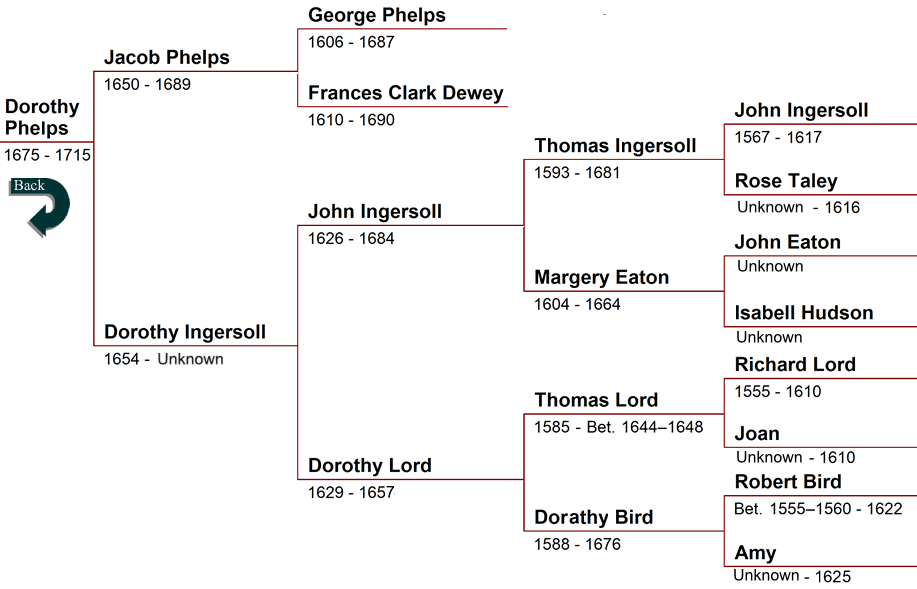 |
Note: Before 1752 the year began on March 25th. Dates between January 1st and March 24th were at the end of the year, not the beginning. Please Note: Two images and much of the information on the Lord Family came from the Living in the Past website. Visit this wonderful website for more. Much of the information on the Ingersoll and Eaton families comes from David L. Greene's article, The English Origin (And Spiritual Turmoil) of John Ingersoll of Westfield, Massachusetts, published in April of 1997 in volume 151 of the New England Historical and Genealogical Register. |
Jacob Phelps was born on February 7, 1649/50, in Windsor, Hartford County, Connecticut, to parents George Phelps and Frances Clark Dewey. He was the eldest of their three sons, but had nine older half siblings from is father's and mother's previous marriages. Jacob moved with his family to Westfield, Hampden County, Massachusetts, sometime after the end of 1654. There he met Dorothy Ingersoll and they were married on May 2, 1672, in Hartford, Connecticut. They had seven children, of which six survived to adulthood (see Dorothy below for details). In 1687 Jacob inherited several parcels of land in both Windsor and Westfield, from his father, which included most of his house, barn and orchards. He also received some of his father’s clothing. Along with his eldest half-brother Isaac, Jacob appeared before the court to settle the estate on June 6, 1687. Sadly Jacob died just two years later on October 6, 1689, in Westfield, at the age of 39. (Mouse over and click on his death record image below left, in Dorothy's bio, to enlarge it in a new window/tab.) |
| ~<^>~ |
Dorothy Ingersoll was born on May 20, 1654, in Hartford Connecticut. She was the second of three children born to John Ingersoll and Dorothy Lord. About 1656, the family moved to Northampton, Massachusetts. Her mother died, probably in childbirth, when Dorothy was one year and seven months old. Her father then married Abigail Bascom and this is the woman that raised Dorothy. The family moved to Westfield, Massachusetts, about 1666, and here Abigail died when Dorothy was just short of 12 years old and her father married Mary Hunt not long after.
She is mentioned in her grandmother's (Dorathy Bird Lord) will several times as follows “. . .and my 3 Cows I give unto my gr. children Dorothy and Margaret Ingersoll. I give to Dorothy Phelps my Coverlid and a feather pillow beere. I give to Majory Ingersoll and her sister Dorothy, to Each 20 shillings.” Some researchers say Dorothy Ingersoll Phelps died at 34 years old, in 1689 in Westfield, Hampden Massachusetts, the year following the birth of her last child. If this is true, being that her husband died in October of this same year, they left their six children, aged 1 to 14 years old orphaned. Being that her death is not recorded like her husband’s is, this doesn’t seem plausible. Other researchers say she married a Mr. Root, but again records can’t be found to confirm this. Unfortunately, we do not know what happen to Dorothy after her husband’s death. |
| ~< Back to Chart >~ |
George was declared a freeman of the Massachusetts Bay Colony on May 6, 1635. Later that year George, with a significant number of Recovery passengers, left Dorchester and went on to the new settlement of Windsor at the junction of the Farmington and Connecticut Rivers, now Windsor, Hartford County, Connecticut, and settled there. He met and married Phillury Randall there sometime prior to 1638 and they had five children, all born in Windsor — Isaac, the eldest on August 20, 1638; Abraham on January 22, 1642/3; two children who both died in 1647; and Joseph on June 24, 1647. Phillury died on April 29, 1648, leaving her husband with three children, the youngest only a year old. (It should be noted that some researchers say she died on August 29, 1648, but that is the death date of her brother Philip Randall.) Widow George Phelps married widower Frances Clark Dewey on November 30, 1648, in Windsor. She came to the marriage with six children and had three more sons with George (see her below for details).
|
| ~< Back to Chart >~ |
Frances Clark Dewey was born about 1610/11 in England to unknown parents-her maiden name is unknown. She married a man with the last name of Clark, probably in 1635 and had a daughter Mary about 1636 with him. Mr. Clark died and Frances married Thomas Dewey on March 22, 1637/8, in Windsor, Hartford County, Connecticut. They had five additional children – Thomas born on February 16, 1639/40; Josiah baptized on October 10, 1641; Anna baptized on October 15, 1643; Israel born on September 25, 1645, who died at 33 years old; and Jedediah born on December 15, 1647. Thomas apparently adopted Mary as she is mentioned in his will as Mary Clark Dewey, one of his six children. Five months after her last child was born, her husband Thomas died on April 27, 1648. |
| ~< Back to Chart >~ |
When John was fifteen, he was apprenticed on January 25, 1642, to Thomas Dawes of the Tylers and Bricklayers Company in London. He was back in Derby around 1644, when he was about eighteen and “God met with me by Sermon I heard at Darby in old England”, though his return to that borough may have been a temporary visit. This was during the English Civil War which lasted from 1642-1651, and resulted in the execution of King Charles I on January 30, 1649. Some time after 1644, John immigrated to America and none of his immediate family went with him. The next we know of John is that he married Dorothy Lord in Hartford, Connecticut, on September 3, 1651. He was 25 and she was 22 years old. They had two children there, see Dorothy's bio for more on the children. In the Records of the Particular Court of Connecticut 1639-1663, we find that on November 28, 1654, he was fined 10s by the Connecticut Particular Court for the breach of the law against lyinge. They then moved to Northampton, Hampshire County, Massachusetts. Northampton is in the Connecticut River Valley, where an epidemic had wiped out most of the Native Americans living there, making much good, fertile land available. There they had their third daughter in January of 1656. Dorothy died there, either in childbirth or shortly after. John was left with three young daughters from newborn to 4 years old.
In about 1666, they moved to what became Westfield, Hampden County, Massachusetts. Abigail died on April 8, 1668, in Springfield probably from complications during childbirth. John was once again left a widower with very young children, although he now had teenage daughters to help out. After Abigail died, in either late 1668 or early 1669, John married Mary Hunt. He over 40 years old and she was about 28 years old. They had seven children all born in Westfield – John on October 20, 1669; Abel on November 11, 1671; Ebenezer on October 15, 1673, who died at age 8; Joseph on October 16, 1675, who died at age 28; Mary on November 17, 1677 who died at age 12; Benjamin on November 15, 1679, who died at age 24; and Jonathan on May 10, 1681.
John Ingersoll died on September 3, 1684, in Westfield, Hampden, Massachusetts at the age of 58. His widow, Mary died on August 18, 1690. John is buried in the Old Westfield Cemetery (pictured above under George Phelps) also known as the Mechanic Street Cemetery in Westfield. It is not known if the double gravestones (pictured right) are a head and foot stone, or if this is his wife Mary's grave, as she is also buried there. Most of the facing and inscription are no longer on the back stone, so it is really hard to tell. The Relation of Brother John Ingerson I being brought by Godly Parents, who tooke great pains & Care to bring me out of a State of Nature into a State of Grace in watching over me, in keeping me from Sin, & Sabbothbreaking, in bringing me to attend
the word preached, read, & in Cathechising I d little regard itt, but onely for fear of them. The first time, to my rememberance, that God met with me was by a Sermon I heard at Darby in old England upon Ps. 15.1,2, when I was about 18 years old, whereby I was Convinct that as yet I was none that should inherit the holy Hill of Zion, but I thought I would labour to be one that Should. But this Conviction was soon over & I went on in my Sin & vanity still. & tho I met with many Conviction that my State was bad & was in many dangers both at sea, & land; & I saw I must Repent, & become a new Creature if ever I ment to be Saved, yet I put repentance off till afterwards. But being under Mr. Stones Ministry I was convincd that the time was come that I must not put Repentance off any longer, for the Lord had granted me the thing wherein my excuses lay & therefore I set upon Duties, & reformed in many things, & having a book of Mr. Jeremiah Burroughs I read much in it, about Faith, & Hope, & was much incouraged, till I met with an Expression thus, that if my Hopes were not such as would stand with every line of the word of God at the day of Judgment they would availe me nothing. Then being troubled I threw the book a side for a while thinking that altho he was a good man he was too Strict, & mistaken therein. & that I did believe, & that he that did believe should be saved & therefore my State was good. But coming to Northampton I heard Mr. Mather the first time upon that, that in the world ye shall have trouble, but in Christ you may & shall have peace, which incouraged me for a while. But afterwards his preaching did not please me but I thot I would keep my hopes. And the Lord visiting me with sickness that I was neer death, yet I thot I was well enough prepared for death & was not willing to hear to the Contrary. But the Lord in great merry was pleased not to take me away in that Condition. But remaining still Confident of my good Estat, I, as I was on atime into the meadow to work, thot nothing should dash my hopes thereof. But presently the thoughts of [blank] who murdered himselfe Coming into my mind, I for a while much wondered at it. But my thots soon runing thus, What if God should leave me? then I should do so. & the temptation came so hard upon me that God would leave me, & I should certainly dy such a death; be guilty of mine own Blood, & be damned irreconcilably, that I was not able to go on to my business; but returning home, the temptation prevaild more, & more upon me, & I was filled with horrour of Conscience, the Lord did so manifest his wrath & Displeasure against me: & my Sins were like mountains ready to sink me down into Hell every moment. & not being able in the night to sleep, was forced to rise up at midnight, & Call up my Father in Law, who hearing how it was with me, & that I feared I had sinned the unpardonable Sin; & that there were no Hopes of mercy, gave me good Counsell, & prayed with me. & after having some abatement I returned home, & remain d in thatCondition: But the Lord after awile was pleased to |
| ~< Back to Chart >~ |
|
| ~< Back to Chart >~ |
Thomas Ingersoll was born about 1593, probably in Derby, Derbyshire, England, during the reign of Queen Elizabeth I. His parents may have been John Ingersoll and Rose Talley. Nothing is known of Thomas until he moved from Derby to the London area to earn a living, as many have done throughout English history. He lived in Limehouse or Poplar, in the parish of St. Dunstan’s Church, which was a large parish populated primarily by mariners and by tradesmen who made their living from supplying products for the sea trade. On one side of the peninsula was Limehouse Reach, and on the other was Blackwell Reach. The Survey of London indicates that there were ropehouses and walks in Poplar along the Blackwell Causeway when Ingersol lived there and somewhat later near the Limehouse Causeway. Thomas Ingersoll doubtless lived in this area and worked as a ropemaker.
They then returned to Thomas’s hometown of Derby 1625, a time when the plague was heavy in London. He changed his profession to shoemaker when he returned to Derby, probably because ropemaking is often associated with ports, and there would have been less need for ropemakers in an inland borough. Here Thomas and Margery had their remaining six children. Four years after their last child was born, the English Civil War began. It lasted from 1642-1651, and resulted in the execution of King Charles I on January 30, 1649. Charles’ son Charles II fled England, the monarchy was abolished and the country was led by Oliver Cromwell. During this turmoil, Thomas’s son John immigrated to America. A political crisis followed the death of Cromwell in 1658 resulting in the restoration of the monarchy, and Charles II was invited to return to Britain. On 29 May 1660, his 30th birthday, he was received in London to public acclaim. Records show that Thomas Inkersall of Saint Werburgh Parish paid 2s at the Free and Voluntary Present of 1661 (supposedly a voluntary gift on the restoration of Charles II), and he was assessed for one hearth, 1662-1670. Besides being a shoemaker, Thomas was also the town crier, a paid town official who made official announcements at specified times to a populace that was still largely illiterate. The Derby rental rolls show that he was paid £2 12s a year by the borough, for performing his duties in 1677, 1678, 1680, and 1682.
The Will of Thomas Ingersoll: “In the name of God Amen I Thomas Inkersall of Darby in the County of Derby the Towne Cryer being sickly & weake of body yet of sound memory praised be God doe make and ordaine this my last will & Testament in maner & forme following viz I bequeath my Soule into the hand of Allmighty God my Creator trusting in his mercie through the merits & satisfaction of Jesus Christ my blessed Saviour for the pardon of my sinns & salvation of my soule And my body to the earth from whence it Came And as for my worldly Goods which God hath granted mee I bequeath them as followeth first to my daughter Sarah five poundes which will make up what shee hath had neare Thirty poundes And to my sonne Thomas Inkersall five shillings And to my sonne Samuell Inkersall all my houshold goodes And the rest & residue of my p[er]sonall estate my debtes legacies & funerall discharged and such Charges as my executor shall be put to being defraied the said residue I say to be devided the one halfe L bequeath to my sonne John Inkersall living in new England if hee be yet living if not to his Chilldren And the other halfe I bequeath to my grandchild John Inkersall the yonger sonne of my sonne Samuell tobe paid him when he shall accomplish the age of Eighteene yeares & be able to discharge my Executor and such meane p[ro]fits as shall be made of his p[ar]t towards his bringing up And as for my house & all the appurtenances I bequeath the same to my sonne Samuell Inkersall & his wife for the tearme of theire naturall lives & the life of the longer liver of them and after their decease to Thomas Inker- sall my grandchild Eldest sonne of my sonne Samuell and to the heires of the body of the said Thomas and; for default of such Issue to the heires of the body of my said sonne Samuell Inkersall and for default of such Issue to my owne right heires for ever And I dde make & ordaine my trusty & loving friend and Cozene Isaac Platts my Executor of this my last will & Testament & my loving friend Edward Robinson overseeer [sic] of the same Witnesse hereunto my hand & seale dated the Twelvth day of August in the Twenty fifth yeare of the Raigne of our Soveraigne Lord Charles the second by the grace of God of England Scotland France & Ireland King Defender of the faith &c: 1673 Signed sealed & published as his last will & Testamtin pr[e]sence of Thomas Strong, Thomas Edmond, Robinson Inkersall [Proved 13 July 1681]” |
| ~< Back to Chart >~ |
On December 15, 1620, Margery married Thomas Ingersoll at Saint Dunstan’s when she was 16 years old. Their first child, John was baptized at St. Dunstan’s on November 12, 1624, died a month later and was buried there on December 13, 1624. Their remaining six children were all born in Thomas’s hometown, Derby – ancestor John; Thomas, baptized at St. Werburgh’s Church on April 14, 1628; Sarah, baptized at St. Alkmund’s Church, on February 27, 1630; Hester, baptized at St. Alkmund’s either in September or October of 1631; Elizabeth, baptized at St. Werburgh’s on what looks like October 20,1633; and Samuel, baptized at St. Werburgh’s on October 14, 1638. Only four children were mentioned in their father’s will, Sarah, Thomas, Samuel, and ancestor John. It is not known if Hester and Elizabeth lived to adulthood. David L. Greene states that the records from St. Werburgh’s Church were damaged by a flood, causing “severe water damage, with the ink on some pages entirely washed off.” Margery Eaton Ingersoll died in December of 1664 in Derby and was buried at Saint Werburgh’s (pictured left) on December 26, 1664. She was 60 years old. (Mouse over and click on her burial record image right to enlarge in a new window/tab.) |
| ~<^>~ |
Thomas Lord was born about 1585 in England to Richard and Joan Lord. His mother’s maiden name is unknown. The family seems to have been upper middle class; Richard was known as yeoman and had land, a house and an orchard. Thomas was a smith in Towcester, Northampton, England, and lived there between 1610 and 1629. That is where he married Dorothy Buckley, daughter of Edward Buckley and sister of Rev. Peter Buckley. After her death, he married Dorathy Bird there on February 23, 1611. He was 26 and she was 22 years old. They had at least eight children all born in Towcester –see Dorathy below for details. Thomas and Dorathy left London, England, bound for Cambridge Massachusetts, on the Elizabeth and Ann with seven of their youngest children (their oldest son Richard, had already come to America, as early as 1630). The ship’s master was Robert Cooper and registration for the voyage was open between May 6 -14, 1635. They arrived in Massachusetts Bay in mid-July of 1635. They were met by their son Richard and went to his home in Newtowne (which later became Cambridge). There they stayed through the following winter until the spring. During this time plans were being made for establishing a new settlement 100 miles to the west, on the Connecticut River. Their leader was Reverend Thomas Hooker, the pastor of the Newtowne Church. He did not agree with the Puritans, who dominated the colony, and decided to establish a colony where they could worship as they saw fit. After an expedition went ahead to scout the area and found it suitable, being the northernmost part of the river that a sea-going vessel could navigate, they prepared to leave. The Hooker Company numbered about a hundred, including the ten members of the Lord family, and set out on the last day in May of 1636 with cattle, pigs and other livestock and seeds for planting. They arrived at the Connecticut River about two weeks later and crossed it on rafts and crude boats to the spot where Hartford would be established.
The spring of 1637 brought trouble. There had been sporadic violence between settlers and Indians throughout the Connecticut Colony since the English first arrived and began to take root. There was guilt on both sides, and revenge attacks which only escalated the violence. Suddenly on April 23rd came the Wethersfield massacre, just a few miles south of Hartford. Two hundred Pequots attacked Wethersfield, killed six men and three women and captured two girls. The Indians also kept the Saybrook Fort, at the mouth of the Connecticut River, in a virtual state of siege, and captured and tortured to death many settlers. The colonists responded byforming an army, including 61 from Hartford, and practically wiped out the Pequots. The Pequot War officially Nothing much is known about the rest of Thomas’s life, but the majority of his family lived out their lives in Hartford and helped it grow to become the capital of the State of Connecticut. The Fundamental Orders of Connecticut were adopted by the Connecticut Colony council on January 14, 1639. The orders describe the government set up by the Connecticut River towns, setting its structure and powers. It has the features of a written constitution, and is considered by some as the first written Constitution in the Western tradition, and thus earned Connecticut its nickname of The Constitution State. Thomas Lord, recognized as an original proprietor of Hartford died between 1644 and 1648 and is buried in the Ancient Cemetery (also known as the Merriman Burying Ground) in Southington, Hartford County, Connecticut, where his name, and his two eldest sons names are listed on the Founder's Monument (pictured left-mouse over monument to read names). The inscription on his grave (pictured right) reads: In Memory Of Mr. Thomas Lord born 1585. One of ye Original Prorietors of Hartford. |
| ~< Back to Chart >~ |
“I Dorothy Lord of Hartford do declare this to be my last Will & Testament: In a codicil to her will, Dorathy, wrote down in great detail who should get what item. For example she left to her daughter Anna Stanton, “my Great Brass Pann & my great Bible” and to her daughter Aymie Gilbert, “my lesser Brass Pann & a Brass Scummer & a Brass Chaffing Dish.” To view her original will and codicil, mouse over image right and click on it to enlarge in a new wndow/tab.
|
| ~<^>~ |
Greene tells us that John was buried at St. Werburgh's Church on August (month is uncertain) 18, 1617, and Rose was buried there on August 1, 1617. This researcher ha seen the burial records, which are extremely difficult to read, and believes that one of them, possibly Rose was buried in October of 1616, and the other was buried in 1617. View the image for yourself, and you decide! (Mouse over and click on burial record image left to enlarge in a new window/tab.) |
| ~< Back to Chart >~ |
John Eaton’s ancestry is unknown. What we know of him comes from his children’s records. John was a rope maker. He married Isabell Hudson on May 6, 1593, at St. Dunstan's Church in Stepney, Middlesex County, England. David L Greene wrote that there are only two St. Dunstan baptism records for their names as parents — Thomas baptized on March 17, 1594/5, whose father is listed as of Poplar, died at 8 years old on August 31, 1603; and ancestor Margery, whose father was listed as of Shadwell. Greene states,“This is probably not a complete record of this family, if indeed it is a single-family group.” But being that it’s about a 1/2 mile from Shadwell to Poplar, which are both within London, it seems plausible that they are the same family. There is also an Elizabeth, baptized at St. Dunstan’s in December of 1609, with a father named John Eaton, who very well may be the child of our John and Isabell. There is also a St. Dunstan burial record for an Elizabeth Eaton, with a father named John, dated June 26, 1626. If she is the same Elizabeth, she would have been 16 years-old when she died. John is described as of the same parish as Thomas Inkersall, his soon to be rope maker son-in-law, on the application Thomas filed to the Bishop of London for a marriage license dated December 14, 1620. Carpenter John Taylor of St. Buttolph without Aldgate, London, testified to John Eaton's consent for his daughter Margery's marriage on this document. It is not known where John and Isabell Eaton died and are buried. There is a St. Dunstan’s burial record for a John Eaton dated October 7, 1628, that may or may not be our John. Unfortunately, nothing more is known about John and Isabell Eaton. |
| ~<^>~ |
In his will, Richard called himself a husbandman, but parish records note him as a yeoman. But whatever the case, at the end of his life he was a farmer who owned fruit orchards that included apples. It is speculated that he wasn't the one working in the orchards, but had men employed in the fields, while he ran the business. It is known that Richard was not literate, as he signed his will with a mark. Dated May 30, 1610, his will was probated on February 7, 1611 and included almost 100 Pounds in cash disbursements, which, at that time, was a considerable sum. The first item in his will made a gift to his church-12 pennies (one shilling)- just enough to be buried in the consecrated ground of the churchyard. In it, he named his wife, Joan; his daughters Elizabeth, Ellen and Alice; and his son, ancestor Thomas, who received the bulk of his estate. At the time of the will, the daughters, Ellen and Alice, were unmarried, but Ellen was engaged to Robert Marriot of Calcot. Richard’s entire will as printed in Henry W. Beljnap’s article, The Wife of Thomas Lord of Hartford, published in volume 54 of the Essex Institute Historical Collections, reads as follows (paragraph separation added): “In the name of God Amen—30th Daye of Maye in the Yeare of our Lord God 1610—I Richard Lorde of Towcester in Co of Northton, husbandman of whole mynde doe make this my last will and testament—my soull vnto Allmighty God and my bodie to be buried in the Churchyard of Towcester— 1st I give towards the repare of the said parish church of Towcester xij d.
|
| ~< Back to Chart >~ |
Robert Bird is believed to have been born between 1555–1560, probably in Towcester, Northamptonshire, England, possibly one of five children born to Richard Bird and Joanne Mitchell. He married a woman named Amy, whose surname is unknown. Researchers have claimed that she was born in Towcester on May 25, 1565; that they married on April 14, 1584, there; and that her surname was either Hill, Hyll, Hadman, or Marsead. Unfortunately no one has given any supporting documentation for any of this information. There are marriage records for couples with similar names, but the dates do not work out for our Robert and Amy. Robert and Amy had at least two children — Perris who was baptized on September 6, 1584, in Earls Barton, Northamptonshire, England, then married George Tighte and was left a widow; and ancestor Dorothy. Earls Barton is about 19 miles northeast of Towcester, but it is not known if they lived there or just had their first child baptized there. Some researchers say there was a son named Robert, but that is unlikely, as he’s not mentioned in the will. Robert Bird wrote his will on July 18, 1622, and in it he mentions his wife and two daughters by their married surnames. Robert’s will as printed in Ernest Flagg’s book, Genealogical Notes on the Founding of New England: My Ancestors Part in that Undertaking, reads as follows: Will of Robert Bird
|
~< Back to Chart >~ |
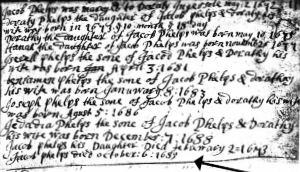
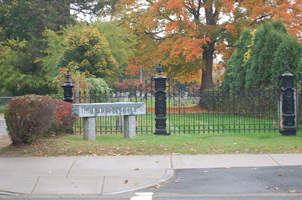
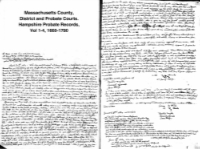

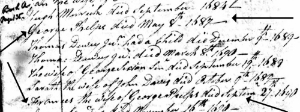
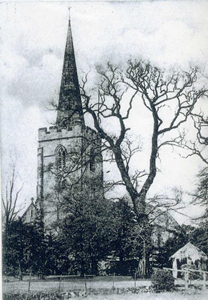 John Ingersoll was baptized in September of 1626, in Saint Werburgh’s Church in Derby, Derbyshire England (pictured right). Because his baptismal record was damaged by flood waters, it is difficult to read.
John Ingersoll was baptized in September of 1626, in Saint Werburgh’s Church in Derby, Derbyshire England (pictured right). Because his baptismal record was damaged by flood waters, it is difficult to read. 

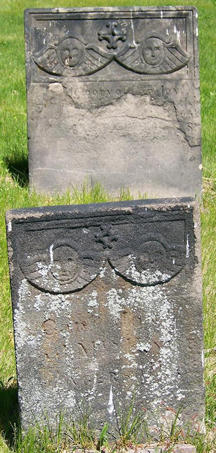
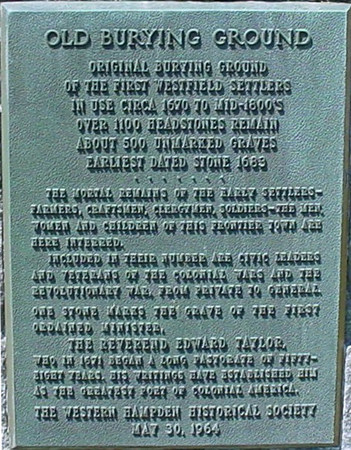

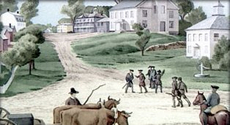 Researchers state that on September 3, 1651, Dorothy married John Ingersoll in Hartford. She was about 21 and he was about 25 years old. They had two daughters there – Hannah, who was probably born in 1652 and ancestor Dorothy. They then moved to Northampton, Hampshire, Massachusetts, where their third daughter, Margery was born in early January, either on the 1st or 2nd of 1656. Northampton was almost directly north of Hartford and a short distance west of the same river her parents had settled on in 1636.
Researchers state that on September 3, 1651, Dorothy married John Ingersoll in Hartford. She was about 21 and he was about 25 years old. They had two daughters there – Hannah, who was probably born in 1652 and ancestor Dorothy. They then moved to Northampton, Hampshire, Massachusetts, where their third daughter, Margery was born in early January, either on the 1st or 2nd of 1656. Northampton was almost directly north of Hartford and a short distance west of the same river her parents had settled on in 1636. 
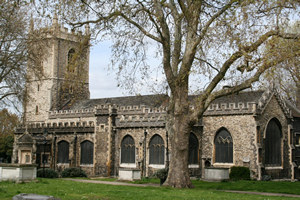

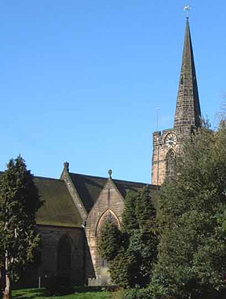 Thomas executed his will (below) on August 12, 1673, when he was sickly and weak, but he recovered and continued to perform his duties as town crier.
Thomas executed his will (below) on August 12, 1673, when he was sickly and weak, but he recovered and continued to perform his duties as town crier. 
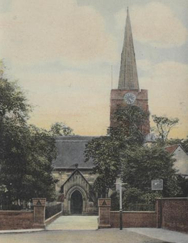 England, in what is now the greater London area. Her parents were John Eaton and Isabell Hudson. (Mouse over and click on her baptism record image right to enlarge in a new window/tab.)
England, in what is now the greater London area. Her parents were John Eaton and Isabell Hudson. (Mouse over and click on her baptism record image right to enlarge in a new window/tab.)
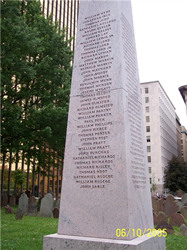 Thomas and sons Richard and Thomas Jr. each had lots “near the falls” at the bend of Little River, which was a branch of the Connecticut. According to records, Thomas had a total of 28 acres and Richard had 18. Being late in the planting season, the settlers had the dual tasks of planting crops necessary for their survival as well as building houses or whatever shelters that would suffice for the coming winter. Until the harvest at the end of summer, provisions for the population consisted mostly of corn traded or purchased from local Indians living in the many villages that still surrounded them.
Thomas and sons Richard and Thomas Jr. each had lots “near the falls” at the bend of Little River, which was a branch of the Connecticut. According to records, Thomas had a total of 28 acres and Richard had 18. Being late in the planting season, the settlers had the dual tasks of planting crops necessary for their survival as well as building houses or whatever shelters that would suffice for the coming winter. Until the harvest at the end of summer, provisions for the population consisted mostly of corn traded or purchased from local Indians living in the many villages that still surrounded them.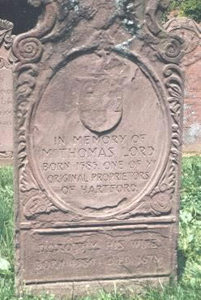 ended on September 1638 when the few survivors of the Pequot tribe were forced to sign the Treaty of Hartford, also called the Tripartite Treaty, declaring the Pequot nation to be dissolved.
ended on September 1638 when the few survivors of the Pequot tribe were forced to sign the Treaty of Hartford, also called the Tripartite Treaty, declaring the Pequot nation to be dissolved.
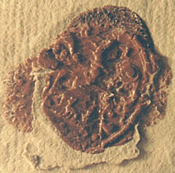
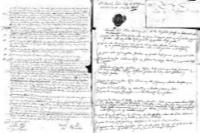
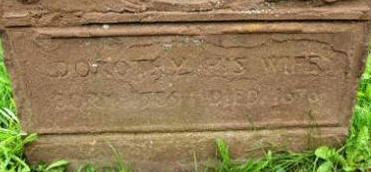 Dorathy outlived her daughter Dorothy as well as her two oldest sons, Richard and Thomas, Jr. who both died in 1662. She also outlived her two youngest sons - John, who died about 1668 and Robert who died about 1673. She names her eldest living son William, and her grandson by her deceased son Richard, also named Richard, as executors of her will, written in February 1669/70, confirming her husband Thomas, her eldest son Richard and her next oldest son Thomas, Jr. were all dead by then.
Dorathy outlived her daughter Dorothy as well as her two oldest sons, Richard and Thomas, Jr. who both died in 1662. She also outlived her two youngest sons - John, who died about 1668 and Robert who died about 1673. She names her eldest living son William, and her grandson by her deceased son Richard, also named Richard, as executors of her will, written in February 1669/70, confirming her husband Thomas, her eldest son Richard and her next oldest son Thomas, Jr. were all dead by then. 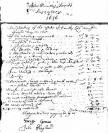
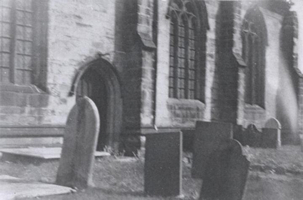 John Ingersol was born about 1567 and is the possible father of ancestor Thomas. He married Rose Taley at St. Werburgh's Church in Derby, Derbyshire, England on December 2, 1592. Both John and Rose's origins are unknown. David L. Greene tells us that Rose’s surname is uncertain, as the record is difficult to read-it could have said Roase [Saley? Taley?].
John Ingersol was born about 1567 and is the possible father of ancestor Thomas. He married Rose Taley at St. Werburgh's Church in Derby, Derbyshire, England on December 2, 1592. Both John and Rose's origins are unknown. David L. Greene tells us that Rose’s surname is uncertain, as the record is difficult to read-it could have said Roase [Saley? Taley?]. 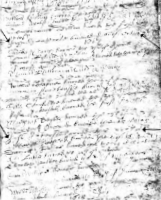
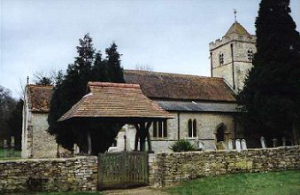 Richard Lord was born about 1555 to unknown parents, possibly in Yelvertoft, County Northampton, England. It is believed he had a brother named William and they were descended from a Robert Laward of London in 1510. Richard married Joan (last name unknown) on November 20, 1569 in Towcester, Northamptonshire, England. From Richard’s will we know they had four children, but only two have baptism records found at St Mary the Virgin Church in Leckhampstead, Buckinghamshire, England (pictured right). They had three daughters— Elizabeth baptized on May 26, 1583; Ellen born about 1584; and Alice baptized on January 18, 1586; and a son, ancestor Thomas. It is assumed Ellen and Thomas were also baptized at the same church, even though records can’t be found for them.
Richard Lord was born about 1555 to unknown parents, possibly in Yelvertoft, County Northampton, England. It is believed he had a brother named William and they were descended from a Robert Laward of London in 1510. Richard married Joan (last name unknown) on November 20, 1569 in Towcester, Northamptonshire, England. From Richard’s will we know they had four children, but only two have baptism records found at St Mary the Virgin Church in Leckhampstead, Buckinghamshire, England (pictured right). They had three daughters— Elizabeth baptized on May 26, 1583; Ellen born about 1584; and Alice baptized on January 18, 1586; and a son, ancestor Thomas. It is assumed Ellen and Thomas were also baptized at the same church, even though records can’t be found for them.
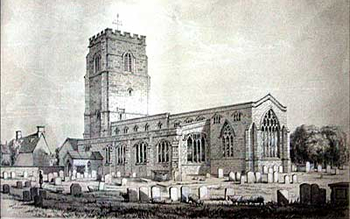 Richard's wife Joan died in Towcester and was buried in the St. Lawrence Church cemetery (pictured left) on September 22, 1610. Richard Lord died about a month after her, and was also buried there on October 16, 1610. (Mouse over and click on their burial record image right to enlarge in a new window/tab.) Unfortunately today there is no way to find the graves of Richard and Joan Lord. In a move to beautify the burial grounds around English churches some long time ago, people removed most of the gravestones, including many of the ones which stood near this church in Towcester. We must assume they remain in this spot to this day.
Richard's wife Joan died in Towcester and was buried in the St. Lawrence Church cemetery (pictured left) on September 22, 1610. Richard Lord died about a month after her, and was also buried there on October 16, 1610. (Mouse over and click on their burial record image right to enlarge in a new window/tab.) Unfortunately today there is no way to find the graves of Richard and Joan Lord. In a move to beautify the burial grounds around English churches some long time ago, people removed most of the gravestones, including many of the ones which stood near this church in Towcester. We must assume they remain in this spot to this day.